Chicken Maqluba Recipe | Upside Down Rice
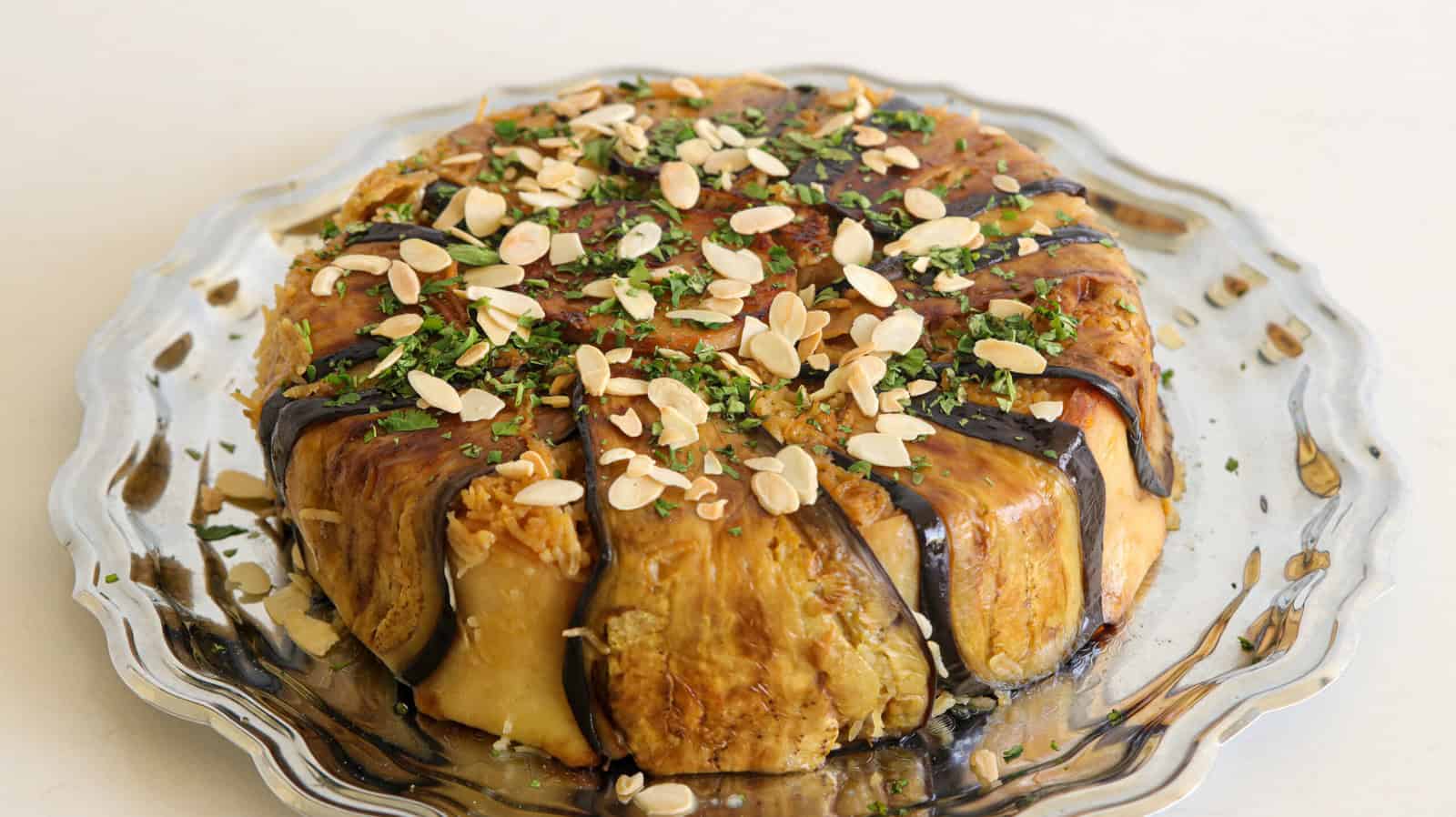
Maqluba is a traditional Middle Eastern dish featuring layers of rice, meat/chicken, and vegetables, cooked together and then inverted to create an impressive and flavorful upside-down presentation. In Arabic maqluba means “upside down”.
WHAT IS MAQLUBA?
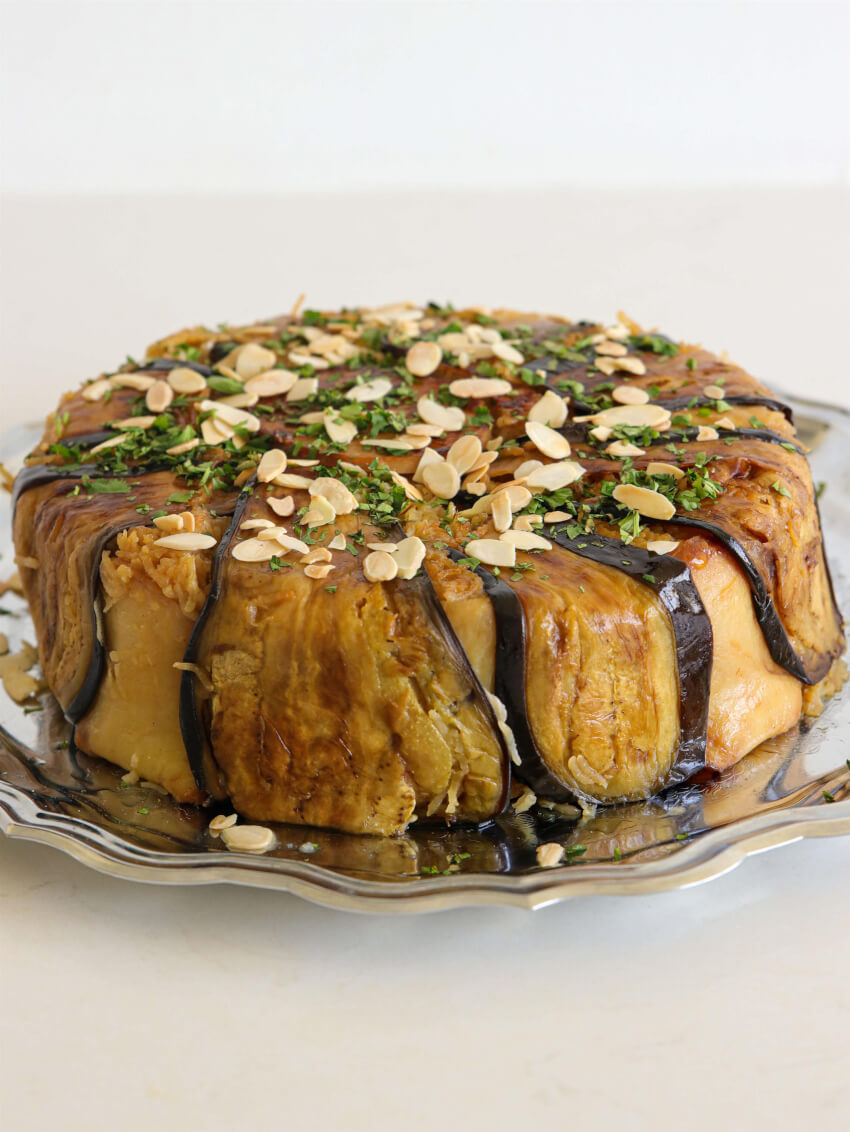
Maqluba, also spelled as Maqlouba or Maqloubeh or Maqlooba, is a traditional Middle Eastern dish that originates from the Levant region, which includes countries like Palestine, Jordan, Lebanon, and Syria. The name “maqluba” translates to “upside down” in Arabic, which describes the cooking technique used to create this dish.
Maqluba is essentially a one-pot dish made by layering ingredients such as rice, vegetables (often eggplant, cauliflower, and potatoes), and meat (chicken, lamb, or sometimes beef) in a pot. The layers are then cooked together until the ingredients are tender and fully cooked. After cooking, the pot is flipped over onto a serving platter, revealing the beautiful layers with the rice on top and the meat and vegetables underneath. This presentation is what gives the dish its name, as the pot is turned “upside down” during serving.
The dish is seasoned with a blend of spices, such as cumin, coriander, and turmeric, which gives it a flavorful and aromatic taste. It’s a hearty and comforting dish that’s often enjoyed during special occasions and gatherings, as it’s not only delicious but also visually impressive when served.
Maqluba is a versatile dish, and variations of it can be found across different countries and regions. The choice of vegetables, meat, and spices can vary based on local preferences and ingredients. It’s a dish that reflects the rich culinary heritage of the Middle East and continues to be cherished by many for its taste and cultural significance.
HOW TO MAKE CHICKEN MAQLUBA?
Crafting the delectable Chicken Maqluba is a process that unfolds in three essential steps, each contributing to the dish’s irresistible flavors.
First step starts by marinating succulent chicken thighs with a harmonious blend of oil, crushed coriander, paprika, salt, pepper, and cumin. This initial step infuses the meat with layers of taste that will later come to life.
The second steps involve the careful orchestration of the chicken’s cooking process. In a pot, sauté chopped onions before introducing the marinated chicken. To this delightful mix, add the fragrant touch of bay leaves, cardamom pods, turmeric, and a cinnamon stick. A gentle pour of water creates a simmering symphony that melds the ingredients together.
The third and final act culminates in the assembly of the dish. Sliced eggplants and potatoes, previously fried to golden perfection, form a foundation in a wide pot. Atop this canvas, layers of marinated chicken and washed basmati rice take their place. The ensemble is brought to life with the addition of the chicken stock, transforming the ingredients into a harmonious masterpiece. As the final notes of this culinary performance, a sprinkling of chopped parsley and toasted almonds grace the dish, delivering both visual allure and an extra layer of flavor. The result is a Chicken Maqluba that stands as a testament to the art of blending tastes, textures, and traditions.
The complete step by step recipe is below + in the video.
VEGETABLES FOR MAQLUBA
In this recipe I use 2 types of vegetables:
1. Eggplants:
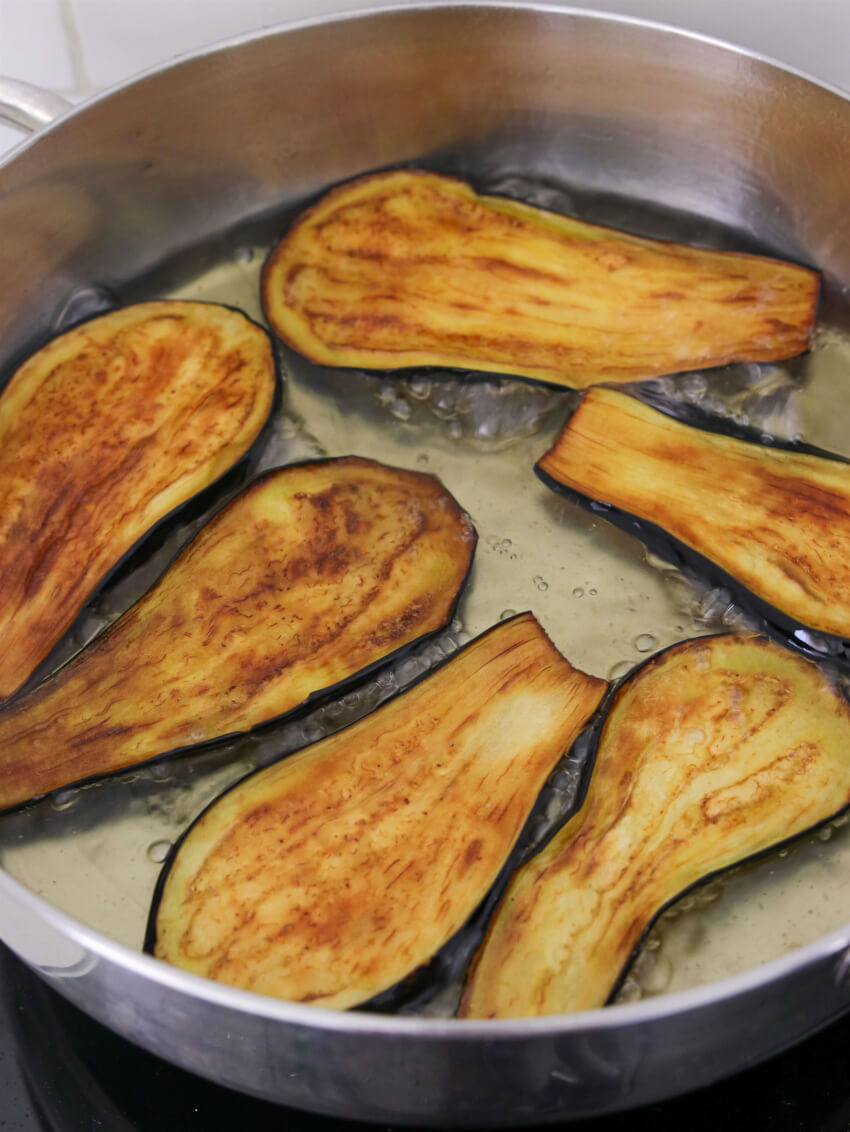
2. Potatoes:
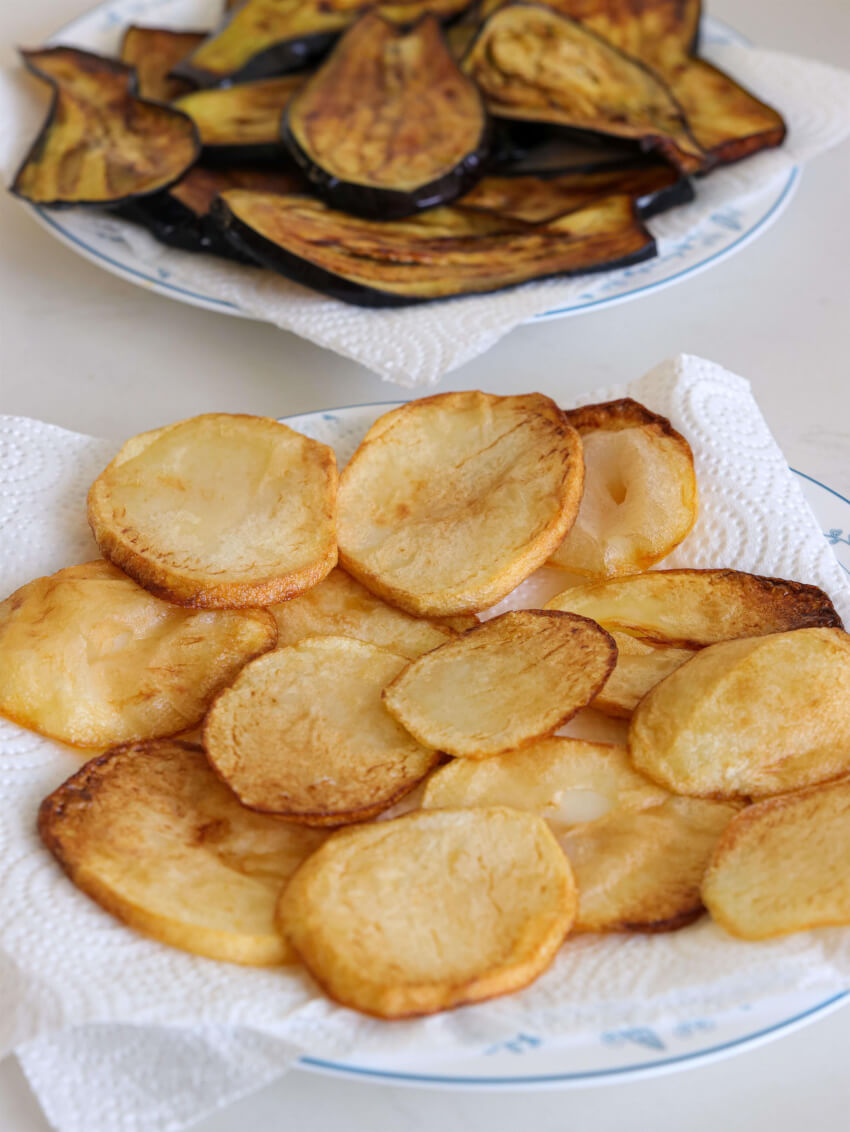
Although I used only eggplants and potatoes, Maqluba is a versatile dish that can be prepared with various vegetables based on your preferences and availability. While the traditional vegetables used in Maqluba include eggplants, potatoes, and sometimes cauliflower, you can experiment with different options to suit your taste. Here are some vegetables that work well in Maqluba:
- Carrots: Carrots add a hint of sweetness and vibrant color to the dish. They can be sliced and layered along with the other ingredients.
- Cauliflower: Cauliflower florets can provide a lovely texture and absorb the flavorful spices during cooking.
- Zucchini: Zucchini, when sliced and layered, can contribute a mild flavor and slight crunch to the dish.
- Bell Peppers: Bell peppers bring a burst of color and a slightly sweet taste. You can slice them into strips and layer them for a visually appealing dish.
- Tomatoes: While not traditionally used, some variations include sliced tomatoes for added moisture and a tangy flavor.
- Green Beans: Trimmed and cut green beans can introduce a crisp element to the Maqluba layers.
- Peas: Peas can be mixed into the rice or layered with the other vegetables for a pop of color and a slightly sweet flavor.
Remember to adjust the cooking times for each vegetable based on their texture and water content. The key is to choose a combination of vegetables that you enjoy and that complement the overall flavors of the dish.
WHAT MEAT CAN WE USE TO MAKE MAQLUBA?
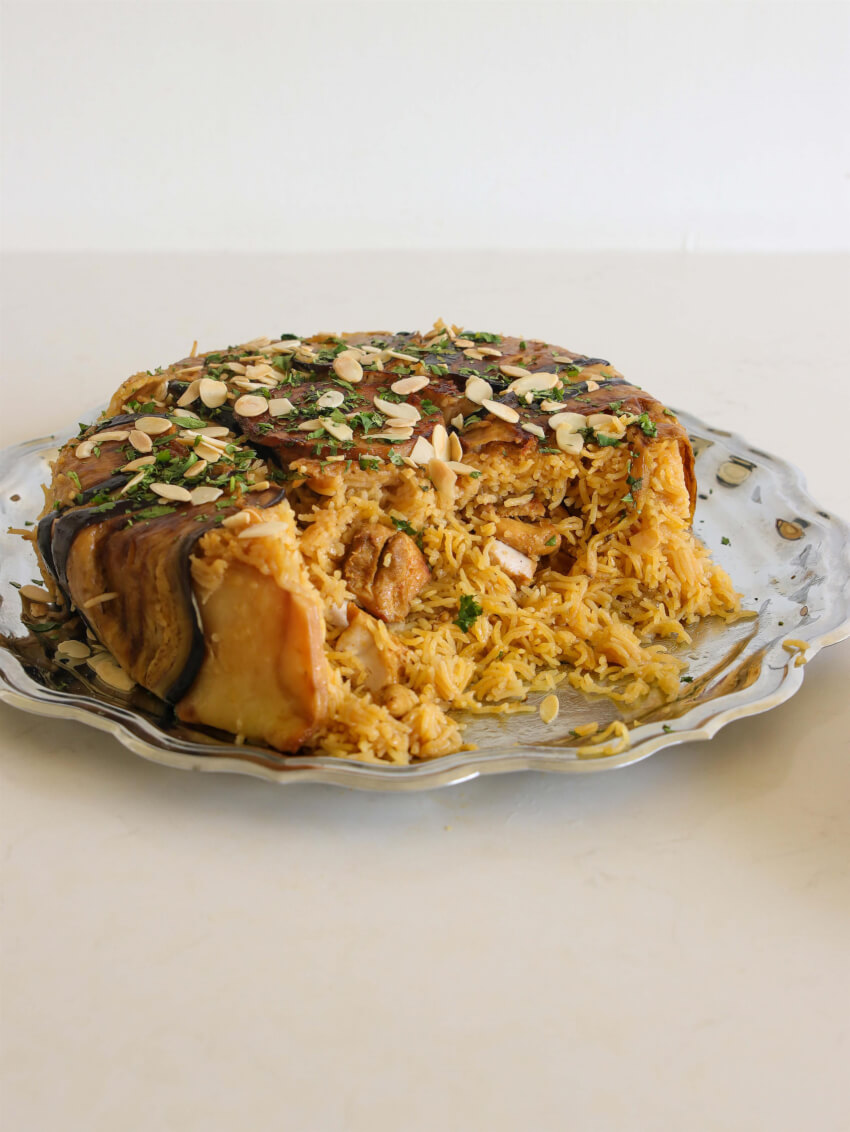
Various types of meat can be used to make Maqluba, depending on your preferences and dietary restrictions. Traditionally, bone-in and skin-on cuts of meat are often used to enhance the flavor of the dish. Here are some common meat options for making Maqluba:
- Chicken: Chicken thighs or drumsticks, with or without the skin and bone, are popular choices. They bring a rich flavor and tender texture to the dish.
- Lamb: Lamb cuts, such as shoulder or leg, can provide a robust and hearty flavor. Bone-in cuts are preferred for their flavor infusion during cooking.
- Beef: While less common, beef cuts like stew meat can be used. Opt for cuts with some marbling to ensure tenderness.
- Turkey: Similar to chicken, turkey cuts can be used for a lighter alternative. Turkey thighs or drumsticks work well.
- Veal: Veal is another option, providing a delicate and tender taste. Use cuts suitable for slow cooking.
It’s important to adjust the cooking times based on the type of meat and cut you choose. Bone-in cuts generally require longer cooking to become tender and impart their flavor to the dish. Additionally, consider the overall flavor profile you want to achieve and choose a meat that complements the spices and vegetables used in the Maqluba.
WHAT RICE IS THE BEST FOR MAQLUBA?
For Maqluba, it’s best to use a long-grain rice variety that is known for its ability to remain separate and fluffy when cooked. The goal is to have rice grains that hold their shape and don’t turn mushy, as this helps maintain the distinct layers of the dish. Basmati rice is the most commonly used and highly recommended rice for making Maqluba due to its characteristics:
- Basmati Rice: This aromatic long-grain rice originates from the Indian subcontinent. It has a fragrant aroma, slightly nutty flavor, and long, slender grains that don’t clump together. Basmati is the best option to make maqluba with, as this rice is known for its ability to absorb flavors well while retaining its individual grains.
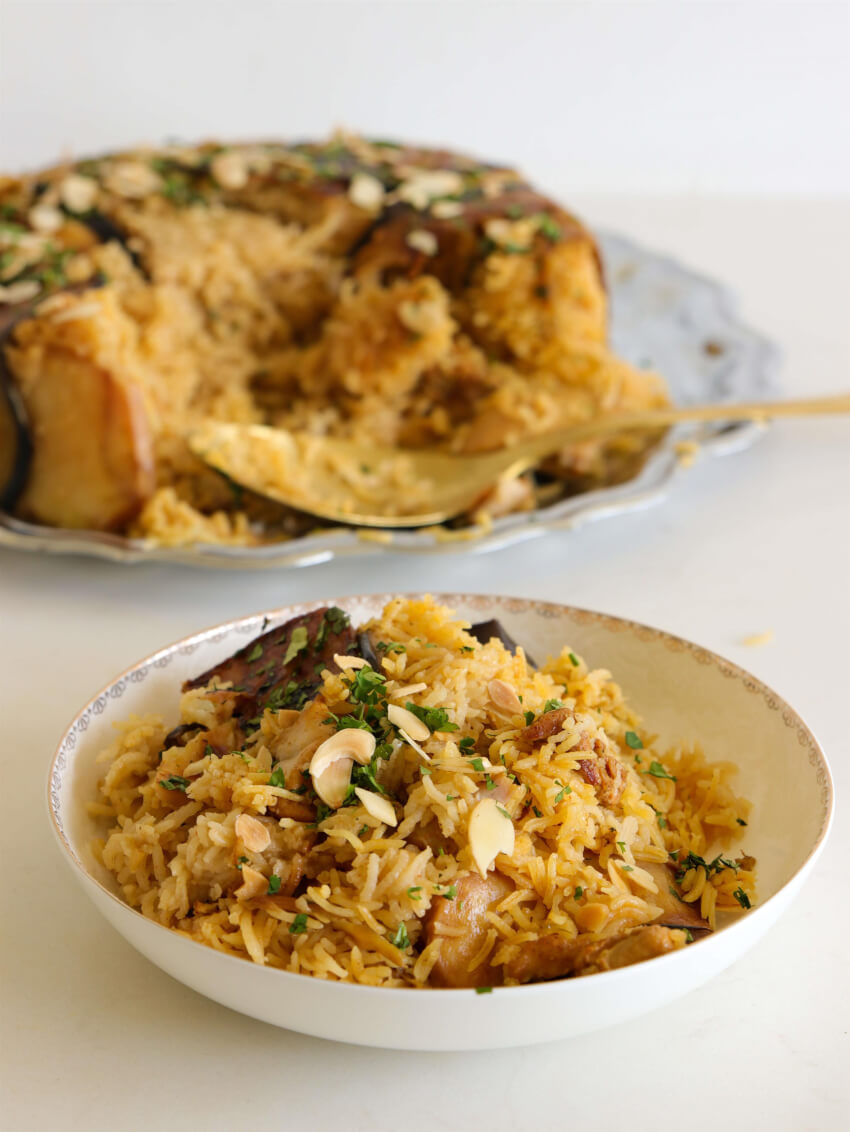
When preparing Maqluba, be sure to rinse the rice thoroughly before using it to remove excess starch, which can cause the rice to become sticky. Additionally, adjust the amount of water you use to cook the rice based on the brand and variety you have, as different rice brands may require slightly different water-to-rice ratios.
Ultimately, using high-quality basmati rice will contribute to the success of your Maqluba dish by ensuring that the rice layers remain distinct and delicious.
WHAT SPICES CAN WE USE TO MAKE MAQLUBA?
Spices play a crucial role in giving Maqluba its distinct and flavorful taste. Here are some common spices used to season Maqluba:
- Cumin: Cumin adds earthy and warm notes to the dish, enhancing the overall flavor profile.
- Coriander: Ground coriander contributes a subtle citrusy and slightly sweet flavor that complements the other spices.
- Paprika: Paprika lends a mild heat and vibrant color to the dish. Smoked paprika can also add a smoky depth.
- Turmeric: Turmeric imparts a golden hue and a mild earthy taste to the layers.
- Cinnamon Stick: A cinnamon stick adds a touch of warmth and sweetness that balances the flavors.
- Cardamom Pods: Cardamom pods offer a fragrant and slightly floral aroma, enhancing the overall aromatic quality.
- Bay Leaves: Bay leaves contribute a subtle herbal note and help infuse the dish with flavor during cooking.
- Black Pepper: Freshly ground black pepper adds a hint of heat and complexity to the spices.
- Allspice: Some variations include allspice for a warm and slightly sweet flavor.
Remember that the key to a well-balanced Maqluba is finding the right combination of spices that suits your taste preferences. Adjust the quantities based on your personal preferences for flavor intensity. The spices should work harmoniously to create a rich and aromatic dish that embodies the essence of Middle Eastern cuisine.
TIPS TO MAKE THE BEST MAQLUBA
To create the best Maqluba, follow these tips to ensure a flavorful, visually appealing, and perfectly cooked dish:
- Start by reading the recipe from start to end and watch the video recipe. It will help you to understand the process and to see if you have all the ingredients.
- Choose Quality Ingredients: Use fresh and high-quality ingredients, including vegetables, meat, and spices, to enhance the overall taste and texture of the dish.
- Rice Preparation: Rinse the rice thoroughly before using it to remove excess starch. This prevents the rice from becoming sticky and helps maintain the distinct layers.
- Layering: Pay attention to the layering process. Arrange the vegetables, meat, and rice in a way that ensures even distribution and optimal flavor infusion.
- Spice Balance: Achieve a balanced blend of spices. Taste as you go and adjust the spices to suit your preference, keeping in mind that the flavors will meld as the dish cooks.
- Cooking Meat: If using bone-in meat, cook it until it’s tender and easily separates from the bone. This step is crucial to ensure the meat is flavorful and enjoyable to eat.
- Cooking Rice: When adding the rice, ensure its spread evenly. Use the right amount of water or stock to cook the rice until it’s fluffy and fully cooked.
- Cooking Time: Keep a close eye on the cooking time. Overcooking the dish can lead to a mushy texture, while undercooking can result in unevenly cooked rice or meat.
- Flipping the Dish: When inverting the Maqluba onto a serving platter, do so in one swift motion to maintain the integrity of the layers. Tap the pot if needed to ensure everything releases smoothly.
- Resting Period: Allow the Maqluba to rest for a few minutes before serving. This allows the flavors to meld and makes it easier to slice and serve.
- Garnishes: Garnish the Maqluba with fresh herbs, such as chopped parsley, and toasted nuts, like almonds or pine nuts, to add visual appeal and a crunchy element.
- Experiment: While traditional Maqluba recipes exist, don’t be afraid to experiment with different vegetables, meats, and spice combinations to create your unique version.
- Patience and Care: Making Maqluba requires patience and attention to detail. Follow each step carefully, and don’t rush the process.
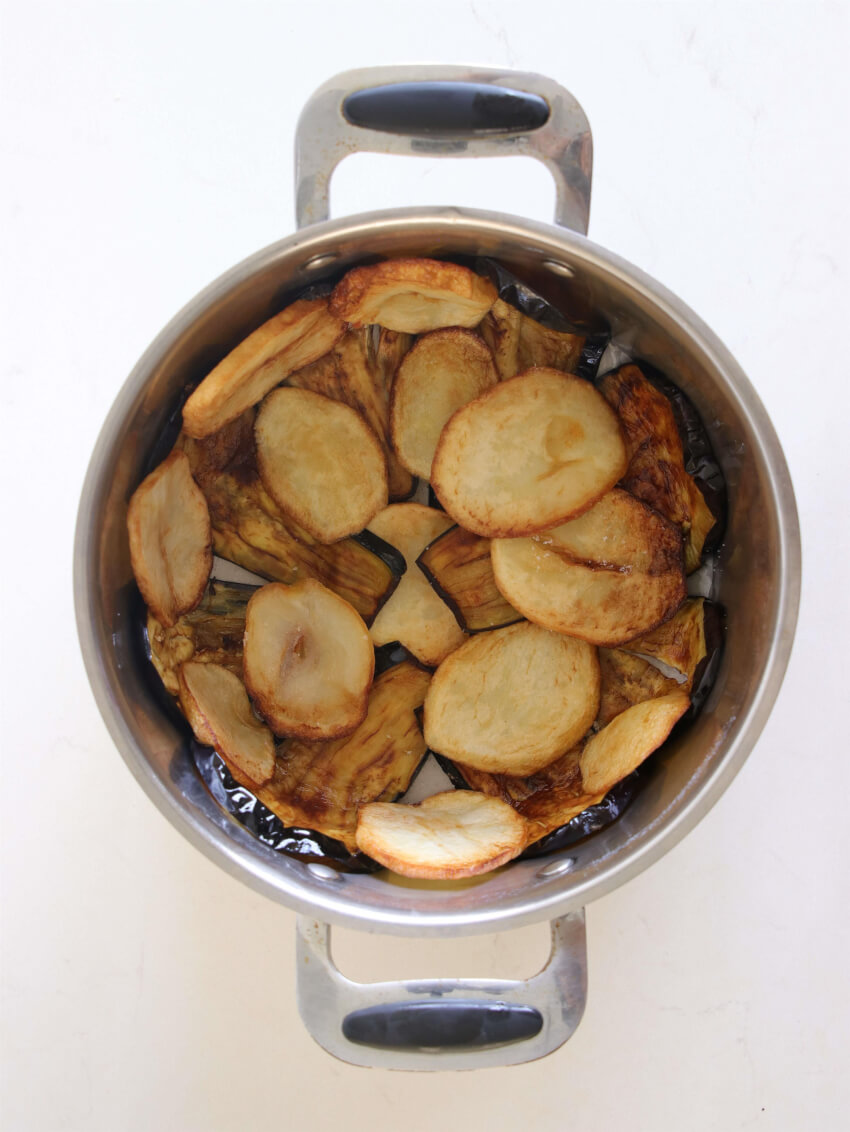
Remember that cooking is a creative process, and the more you practice making Maqluba, the better you’ll become at achieving the perfect balance of flavors, textures, and presentation.
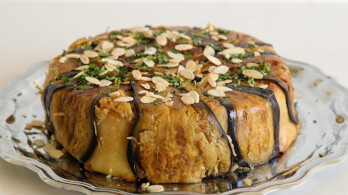
Chicken Maqluba Recipe | Upside Down Rice
Ingredients
For the chicken:
- 2 tablespoons Oil
- 1 teaspoon Crushed coriander
- 2 teaspoons Paprika
- Salt to taste
- Pepper to taste
- 1 teaspoon Cumin
- 500 g Chicken thighs/legs -with skin or without/with bone or without
- 2 Bay leaves
- 4 cups 1L Water
- 5 Cardamom pods
- ½ tablespoon Turmeric
- 1 Cinnamon stick
For the vegetables:
- 2 Eggplants sliced lengthwise
- 2 Potatoes sliced
- 2 cups 330g Basmati rice, washed
- Chicken stock from the cooking
For serving:
- Chopped parsley
- Toasted almonds
Instructions
- DIRECTIONS
- Make the chicken for the maqluba: In a bowl mix oil and spices. Add chicken and mix until coated.
- In a pot heat the oil, add chopped onion and cook until translucent. Add the chicken and cook for 2-3 minutes from each side. Note: traditionally Maqluba is made with BONE-IN chicken with skin. I prefer boneless and skinless chicken. If you prefer the traditional way, use bone in chicken thighs and legs and keep the same process.
- Add bay leaves, water, turmeric, cinnamon stick, cardamom pods and cook for 15 minutes. Note: If you are using Bone-in chicken, cook for 20-25 minutes.
- Meanwhile prepare the vegetables: deep fry the potatoes, then deep fry the eggplants. Drian on paper towels.
- Assembly the maqluba: brush a bit oil at the bottom of a large and wide pot, layer eggplant slices and potatoes as shown in the video (make sure layer them at the bottom and the side of the pot). Note: you also can use other vegetables to make maqluba, such as: carrots, cauliflower and more. Then place the chicken, then spread evenly the rice.
- Pour in the stock. Bring to a boil, then reduce the heat to low, cover and cook for 20-25 minutes.
- Once cooked, turn the heat off and allow to cool slightly. Then, place a very large serving dish or a plate on top of the pot, then, carefully invert the pot onto the dish in one smooth motion. Tap the bottom of the pot to make sure that everything is separated.
- Chop some parsley and fry the nuts and sprinkle them over the maqluba.

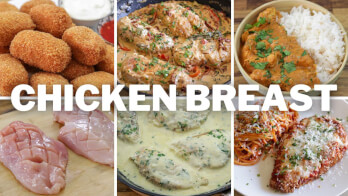

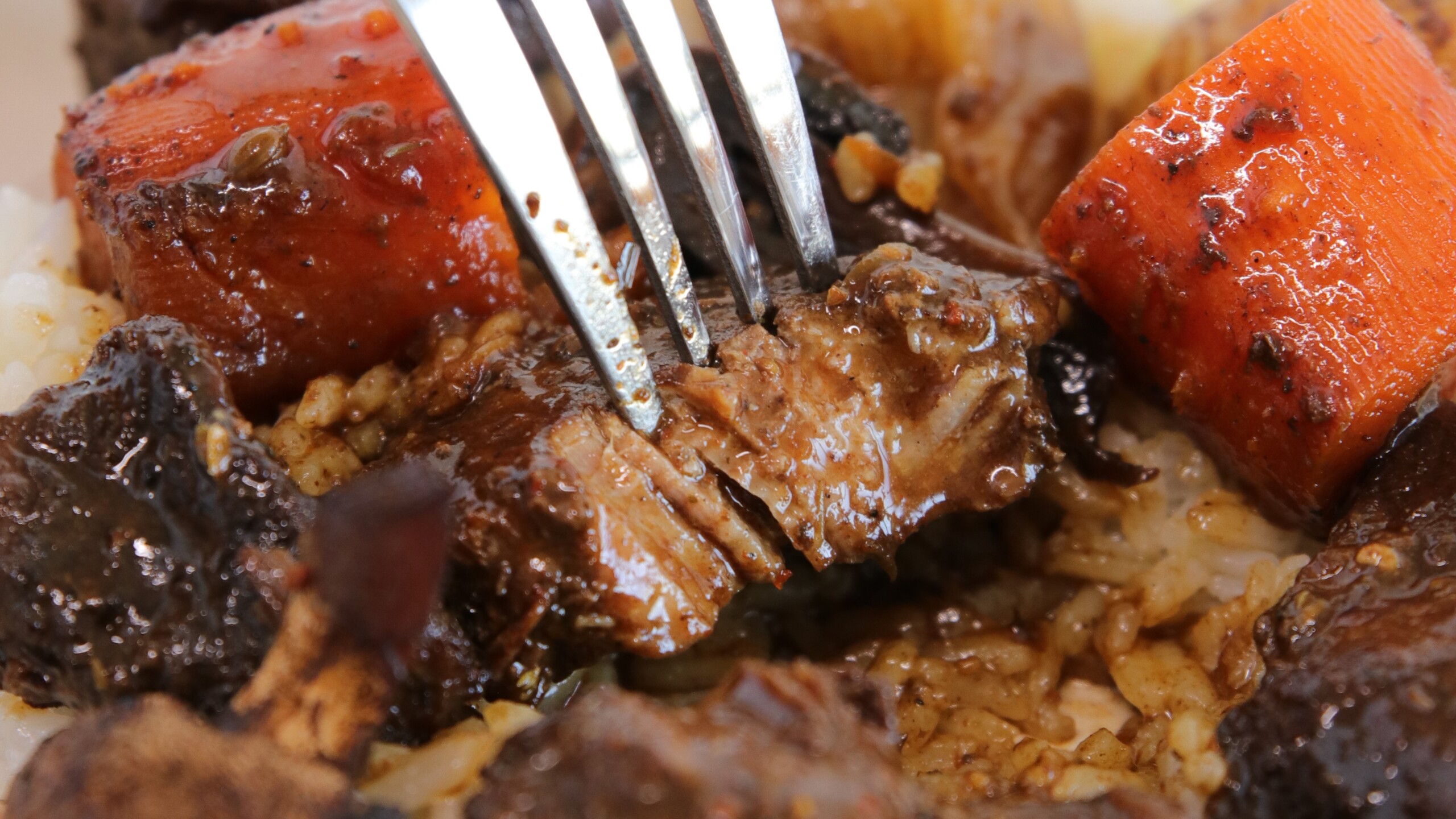
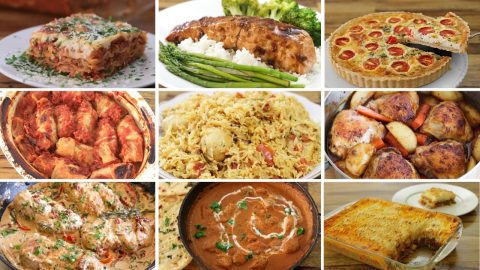
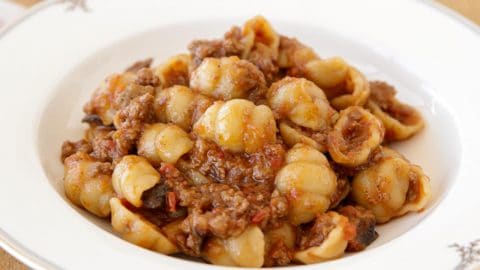
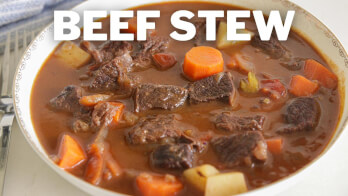
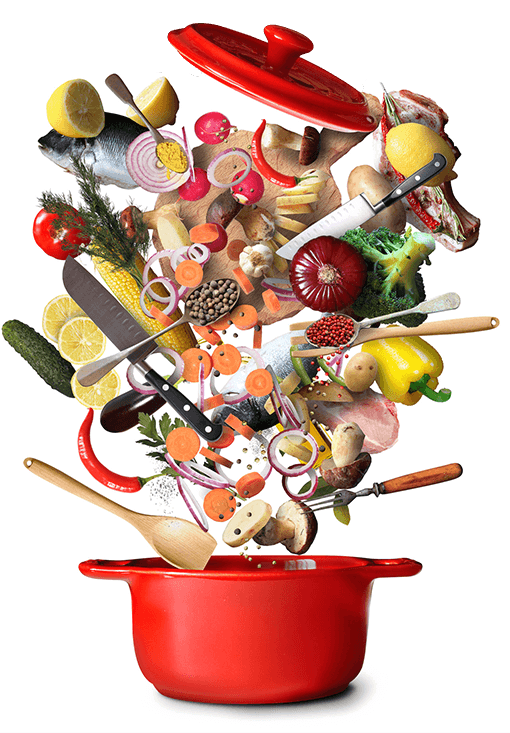

This looks incredibly delicious, thanks for sharing! Looking forward to making Maqluba.
Fabulous! I’m in love!! Thank you for sharing!!
I’m going to try this. 2 questions:
– you say “large” pot. What is the measurement?
– can ground cinnamon be used instead of a stick? If so, how much?
– 30-36 cm pot.
Yes, you can use 1/2-1 teaspoon of ground cinnamon.
Thanks, David! I just watched the video and have another question. I’ve never seen crushed coriander. If I use ground coriander, how much would I use?
Yes, you can use 1/2 teaspoon ground coriander.